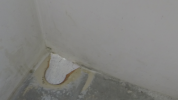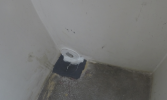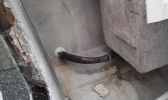Hello all, I am new to the forum and new to Grady White boats. It has been a few years since I sold my Mako and I and super excited about the 1984 GW Overnighter 20 I just bought.
I knew immediately that this boat needed a new transom. There was no motor on the boat and half of that cheap aluminum trim piece was gone exposing the gap between the back of the transom and the top. Stress cracks, brass drain plugs pulled through the skin due to wood swelling etc.
Anyway, I replaced the transom on my Mako successfully and used the boat for 3 years before selling it.
I removed the back skin leaving 4" to tab to, and replaced the layers of plywood using West System Epoxy. All in all, it was a time consuming and expensive process.
My plan for the GW is to remove the back skin leaving 4" to tab on either side of the seam and pour the transom with Arjay compound.
My question is : has anybody done this? Does anybody know if the transom and stringers are tied in wood to wood, or is the transom glassed in then the stringer butts to it.
My concern is taking that back skin off, then finding out that the end of the stringers is bad too. The entire inside of the boat shows no indication of rot. Everything is super clean and hard. The stringers pass the tap test all the way down to the transom. No brown water or stains anywhere.
What do you guys think?
I knew immediately that this boat needed a new transom. There was no motor on the boat and half of that cheap aluminum trim piece was gone exposing the gap between the back of the transom and the top. Stress cracks, brass drain plugs pulled through the skin due to wood swelling etc.
Anyway, I replaced the transom on my Mako successfully and used the boat for 3 years before selling it.
I removed the back skin leaving 4" to tab to, and replaced the layers of plywood using West System Epoxy. All in all, it was a time consuming and expensive process.
My plan for the GW is to remove the back skin leaving 4" to tab on either side of the seam and pour the transom with Arjay compound.
My question is : has anybody done this? Does anybody know if the transom and stringers are tied in wood to wood, or is the transom glassed in then the stringer butts to it.
My concern is taking that back skin off, then finding out that the end of the stringers is bad too. The entire inside of the boat shows no indication of rot. Everything is super clean and hard. The stringers pass the tap test all the way down to the transom. No brown water or stains anywhere.
What do you guys think?





